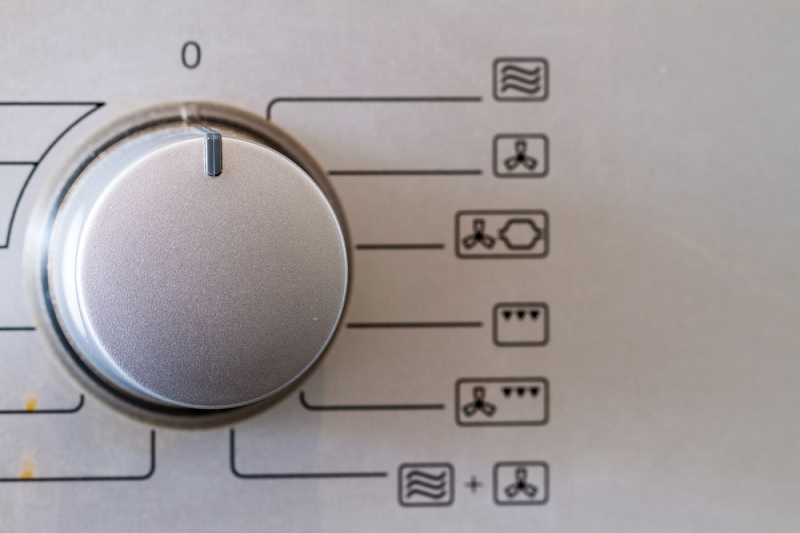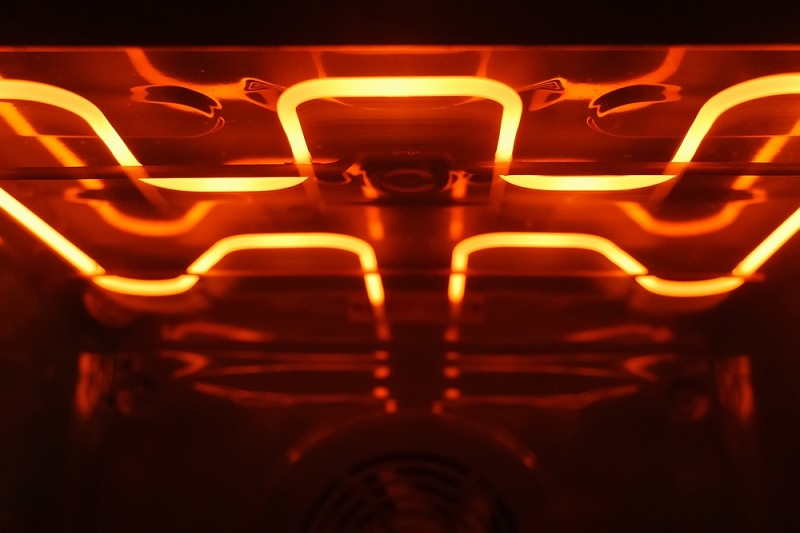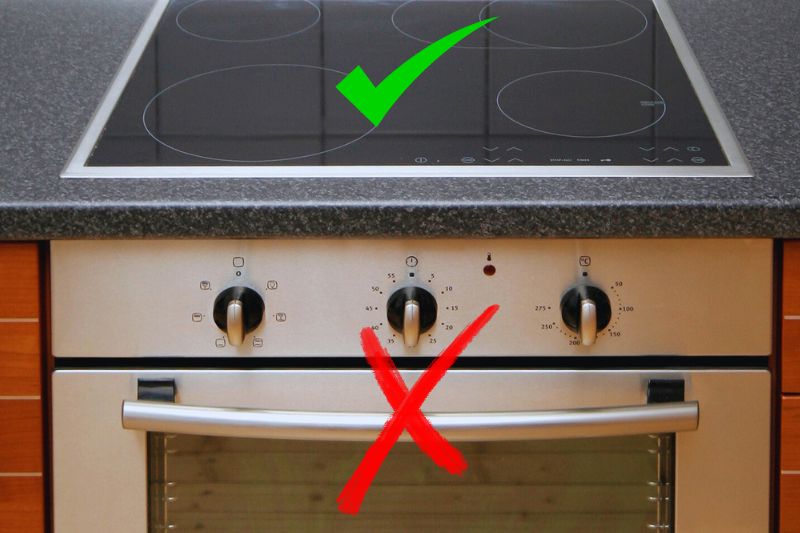Cooking is a fundamental part of our daily lives, and modern kitchen appliances have made this task more convenient than ever.
However, like all electrical appliances, hobs and ovens can malfunction. It can be pretty frustrating when your electric oven suddenly stops working while the hob continues functioning, limiting you to stovetop recipes.
If you’re fed up with being unable to cook oven-baked dishes and forced to cook your meals on the hob, you’re in the right place.
Here, we explore seven potential causes behind this issue and provide solutions to help you get your electric oven back in working order.
Understanding the Basics of Electric Ovens & Hobs
Before diving into the troubleshooting process, it’s essential to understand the distinction between an electric oven and a hob.
An electric oven is the compartment used for baking, roasting, and broiling, while an electric hob consists of the burners used for cooking on the stovetop.
Many homeowners are confused about why their electric oven isn’t working but the hob is, especially if you’re cooking on an integrated appliance or range cooker.
However, while your hob and oven might be part of the same cooker, these components typically operate independently. This means that issues with one do not necessarily affect the other.
Reasons Your Electric Oven Isn’t Working (But Your Stove Is)
Reason 1: Power supply issues
The most basic reason for your electric oven not working could be a power supply issue. It may have become unplugged, or there could be a problem with the circuit breaker or fuse.
Without power to the over, it is unable to work. Even a minor dip in power can prevent your oven from heating up—electric ovens require at least 240 volts to function.
Importantly, this cause is unlikely if your electric hob is working. However, it’s worthwhile checking before progressing to check out more complex issues with your oven. Here’s how:
Solution 1: Check the power cord
- First, ensure your oven is safely unplugged to avoid any electrical accidents.
- Examine the power cord to ensure it is securely plugged into the wall outlet. Sometimes, it can get accidentally unplugged during cleaning or moving the oven.
Solution 2: Check the circuit breaker or fuse
- Locate the electrical service panel or fuse box in your home.
- Check for any tripped circuit breakers or blown fuses. If a breaker has tripped, switch it back to the ‘on’ position; if a fuse is blown, replace it with the same amperage rating.
- If you’re unsure about how to reset a circuit breaker or replace a fuse, it’s advisable to consult an electrician.
Reason 2: Issues with the oven settings

Another reason that your oven isn’t working yet your stove is could be down to control issues.
It’s possible that the oven’s settings have been adjusted or accidentally changed, preventing it from turning on.
Your hob is controlled from a separate panel, so it can still function as usual.
Solution: Check oven door & control panel
- Make sure the oven door is fully closed. Most ovens won’t operate if the door is even slightly ajar, as this is a safety feature to prevent heat leakage.
- Check the control panel or digital display on your electric oven. Make sure the settings, such as temperature and timer, are correctly set for your cooking needs.
- If settings seem to be incorrect, consult the user manual for specific instructions on adjusting them. You may need to reset the temperature and timer to your desired values.
- For ovens with a “lock” feature, check that it’s not accidentally engaged. Refer to the manual on how to unlock the oven if necessary.
Reason 3: Faulty oven selector switch
The oven selector switch lets you choose bake, broil, or other functions. If the switch is faulty, your electric oven won’t work correctly.
For example, it may be permanently stuck on the grill setting and do a terrible job at roasting potatoes, baking cakes, and preparing oven-cooked foods.
Solution: Test and replace the selector switch
- Ensure that you disconnect your electric oven from the power source or the circuit breaker is turned off for safety reasons.
- The oven selector switch is usually located on the control panel of the oven. Locate the switch in your oven. You may need to remove the control panel cover to access it.
- Use a multimeter to test the continuity of the selector switch. This test will determine if the switch is functioning correctly. Set the multimeter to the continuity or ohms setting.
- If there is no continuity or inconsistent readings, the selector switch is likely faulty and needs to be replaced with a new, functional one.
- You can order a replacement selector switch compatible with your oven model from the manufacturer or an appliance parts supplier.
- Follow the instructions for installing the new selector switch. Typically, this involves connecting the wires to the corresponding terminals on the switch and securing them in place.
Reason 4: Malfunctioning bake or broil element

Most electric ovens have two heating elements on the top and bottom of the oven:
- The bottom element is needed for baking and is known as the bake element.
- The top element is mainly used for grilling and is known as the broil element.
Some oven settings rely on both elements heating up at the same time to heat your dishes from the top and bottom simultaneously.
If the bake element, broil element, or both aren’t working, your electric oven won’t heat up properly. Here’s how to fix this issue:
Solution: Inspect the heating elements
- For safety, unplug the oven from the power source or turn off the circuit breaker to ensure no electricity is flowing to the oven.
- Access the heating elements ready for inspection. In most ovens, you can access the bake and broil elements by removing the oven racks and the oven floor or bottom panel.
- Visually inspect the bake and broil elements for any visible damage, such as cracks or burns. If the elements show any signs of damage, they are likely the cause of the problem.
- If the elements are damaged, you’ll need to replace them. Replacement elements can usually be ordered from the manufacturer or a reputable appliance parts supplier.
- Follow the instructions in your oven manual for removing and installing new elements. If you’re not comfortable with this process, consider hiring a professional technician.
Reason 5: Faulty oven temperature sensor (thermostat)
All electric ovens have a temperature sensor that continuously measures the internal oven temperature and compares it to the temperature you have selected.
This information is fed back to the heating elements, telling them to get hotter or colder to keep the oven at the desired temperature.
The oven temperature sensor, also known as a thermostat, might be malfunctioning, causing the oven temperature to be inaccurate.
Meanwhile, your electric hob uses a different thermostat and will still be fully functional. You need to inspect the oven thermostat to see if this is causing the problem.
Solution: Test your thermostat
- As a safety measure, unplug the oven from the power source or turn off the circuit breaker.
- Locate the thermostat in your electric oven. It is typically located at the back of the oven interior, often near the top. You may need to remove oven racks to access it.
- Use a multimeter to test the temperature sensor. Set the multimeter to the resistance setting and place the probes on the temperature sensor terminals.
- The multimeter should show a resistance value within the specified range for your oven model. If it reads significantly outside this range, the sensor is likely faulty.
- If the temperature sensor is faulty, you’ll need to replace it. Order a replacement sensor compatible with your oven model from the manufacturer or an appliance parts supplier.
- Install the new sensor in your oven. Typically, this involves disconnecting the old sensor, removing any mounting screws, and attaching the new sensor in its place.
Reason 6: Defective oven control board
A malfunctioning control board can prevent the oven from functioning correctly. The control board is responsible for managing all the workings of your electric oven, meaning this issue can manifest in many ways.
If you have control board issues, you might experience:
- Issues with your oven heating up
- Unresponsive oven controls
- Error codes on the display screen
Some ovens with hobs function from the same control panel. Therefore, if there is an issue with the control board, your oven and hob will stop working.
However, some electric cookers with stovetops work on separate control boards. Check your oven’s instruction manual before accessing the control board to see if your hob and oven are controlled independently or not.
Solution: Reset the control board
- Disconnect your electric range cooker or oven from the power source for a few minutes before turning it back on to reset the control board. Test your oven again to see if it’s working.
- If the oven is still not functional, you’ll need to locate your oven control board and inspect it. The control board is often found on the back of the control panel. To access it, you may need to remove the control panel or a protective cover.
- Testing the control board is a complex process and may require expertise in electronics. If you suspect a faulty control board, it’s often best to consult a professional technician to diagnose and repair or replace it.
Reason 7: Wiring issues

Loose or damaged wiring can disrupt the electrical connection and cause your oven to stop working.
Meanwhile, if the wiring to your electric hob is intact, it will continue to function as normal. Here is how you can check and solve oven wiring issues:
Solution: Check wiring & connections
- For safety reasons, always ensure the oven is disconnected from the power source or the circuit breaker is turned off before working on the wiring.
- Depending on your oven model, you may need to remove panels or covers to access the wiring behind the oven. Consult the user manual for guidance.
- Having located the wires, carefully inspect the connections for any loose or damaged wires. Tighten any loose connections using a screwdriver or replace damaged wires as needed.
- If you are not experienced with electrical work or if the wiring issue is complex, it’s advisable to hire a professional electrician or appliance repair technician to address the problem.
If you’re still having issues troubleshooting the problems with your oven, consider contacting a professional electrician.
You might need to buy a new electric oven if they cannot resolve the issue. These electric cookers under £500 are a great place to start your search.

Hannah is a freelance content writer and self-proclaimed foodie. When Hannah isn’t sitting tapping at her laptop, you’ll probably find her in the kitchen. As an ex-chalet host, she’s used to cooking four-course meals for 10+ people and loves feeding friends and family whenever possible.







